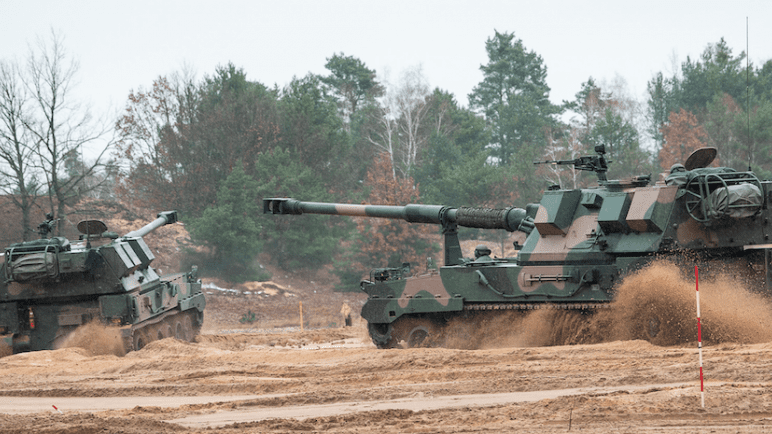Who Will Deliver UAS for the Polish Artillery?

More than 20 entities have responded to the invitation letter requesting businesses to participate in preliminary market consultation, concerning the acquisition of UAVs that would be tasked with working with the artillery component of the Polish Armed Forces, mjr. Krzysztof Płatek, spokesman for the Armament Inspectorate told us. The above refers to two procurement processes, regarding Mini-UAVs and tactical short-range UAV systems.
The mini-UAV-related procurement process has enjoyed interest expressed by a large number of entities. As the spokesman for the Inspectorate said, 12 entities have submitted the relevant requests:
- WB Electronics S.A.
- Dilectro Sp. z o.o.
- Air Force Institute of Technology,
- AP-Flyer Sp. z o.o.
- MSP InnTech Sp. z o.o.
- Polska Grupa Zbrojeniowa S.A.
- FlyFocus Sp. z o.o.
- Asseco S.A.
- Leonardo S.p.A.
- Enamor Sp. z o.o.
- Survey Copter SASU.
- Alioth Logistics Sp. z o.o.
10 entities, meanwhile, expressed their interest in the procurement process concerning the tactical short-range UAVs:
- Flyargo Sp. z o.o.
- WB Electronics S.A.
- AP-Flyer Sp. z o.o.
- IBCOL Sp. z o.o.
- Alioth Logistics Sp. z o.o.
- Enamor Sp. z o.o.
- MSP InnTech Sp. z o.o.
- Polska Grupa Zbrojeniowa S.A.
- Leonardo S.p.A.
- Survey Copter SASU.
The Armament Inspectorate announced the fact that the market consultation process would be launched on 14th June. The procedure is aimed at informing the potential bidders on the requirements and plans of the Polish Ministry of Defence related to tactical short-range UAS platforms, and mini-UAVs. The plans would also cover the integration with the fire control system of the artillery and rocket component of the military.
As we can see, most of the entities interested in the acquisition come from Poland. Some of the enterprises are relatively small. Most probably, some of the aforesaid businesses would express their willingness to deliver just components and elements of the systems, instead of supplying a comprehensive solution.
Throughout the consultation process, tied to the tactical short-range UAVs, the manufacturers would need to prove that the systems they offer would comply with the minimum requirements preliminarily defined. The requirements include operational radius at MTOW of no less than 100 kilometers, ability to continue the sortie and record the intelligence beyond the range of the control station (usable when UAV is transitioning to an area where it would be taken over by another control station), the operational ceiling of no less than 5 thousand meters ASL, an endurance of at least 5 hours, and take-off weight below 150 kilograms.
The possibility of meeting further requirements, including the possible integration of optronic sensor, radar, and target designator weighing at least 25 kilograms, also with the integration of the system with the Topaz fire control system used by the Polish artillery units would also be researched. The ability to provide reconnaissance capacity in different weather, and terrain conditions, also at night is also a subject of the study - this includes the use of daytime/night capable IMINT sensors, and SAR/GMTI radars. Further areas that are to be examined include the ability to take off and land without airfield infrastructure.
An announcement on the parallel consultation process tied to mini-class UAS for the artillery has also been published on 14th June. The minimum operational radius for these has been defined as 40 kilometers, with an operational ceiling of 3.5 km, 2 hours flight endurance, and MTOW of 12 kilograms.
The mini-UAVs for the artillery are expected to be able to carry an optronic sensor with daytime/thermal imaging cameras, weighing at least 2 kilograms. They are also required to sport a set of features similar to the tactical platforms - ability to continue the flight and intel-gathering activities outside the range of the control station, ability to carry out reconnaissance sorties in different terrain and weather conditions, and at night, and ability to carry out operations without airfield infrastructure. The systems in question are also required to be able to work with the Topaz C2 solution.
The requests submission deadline was set for 30th June.
